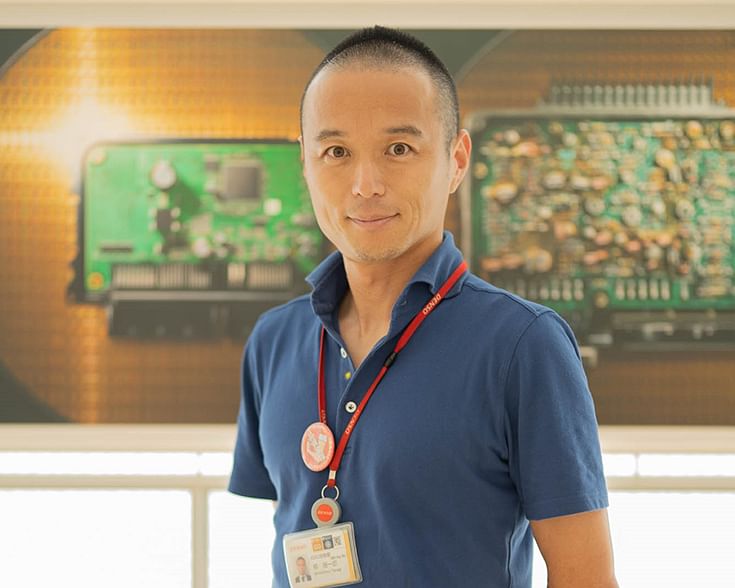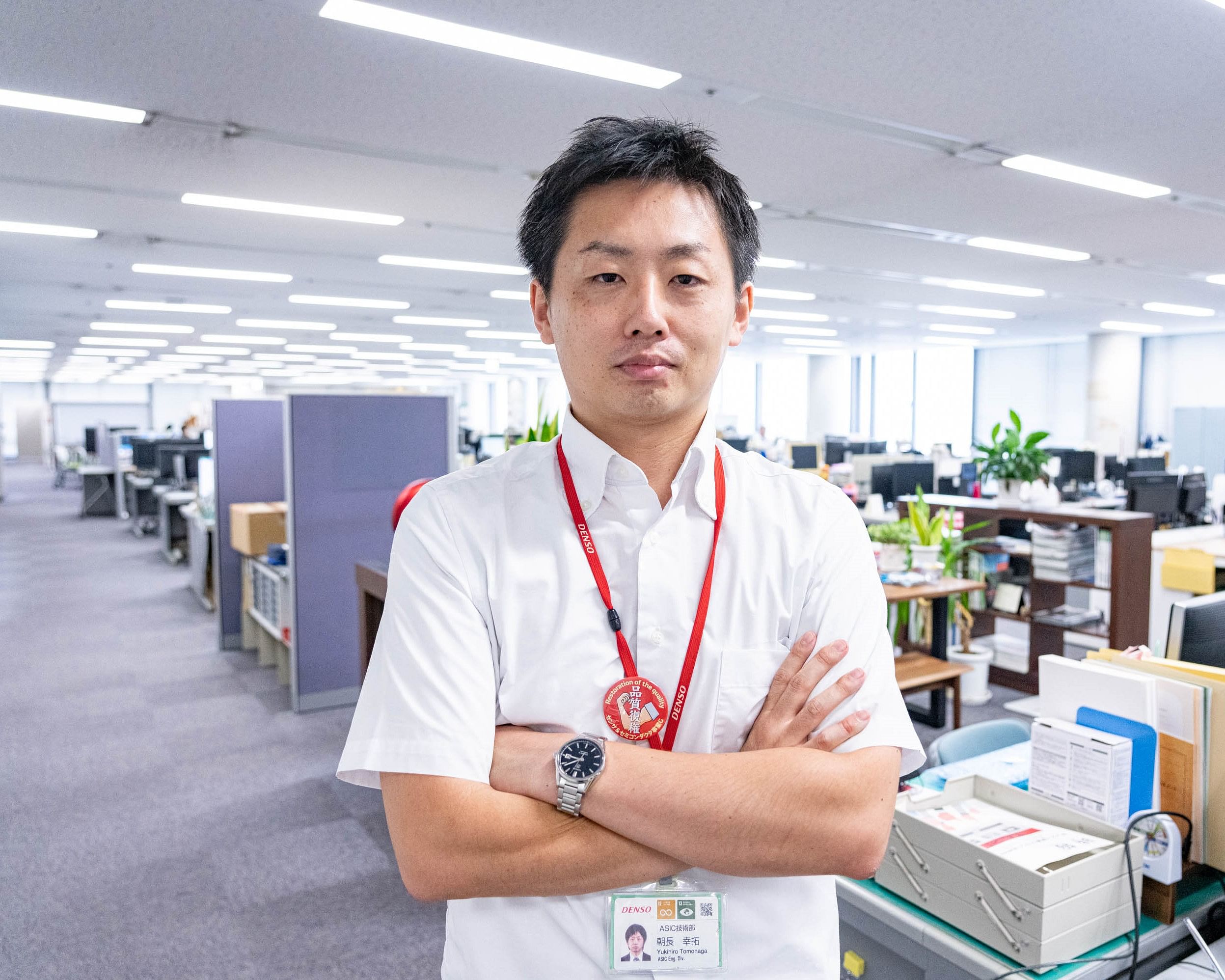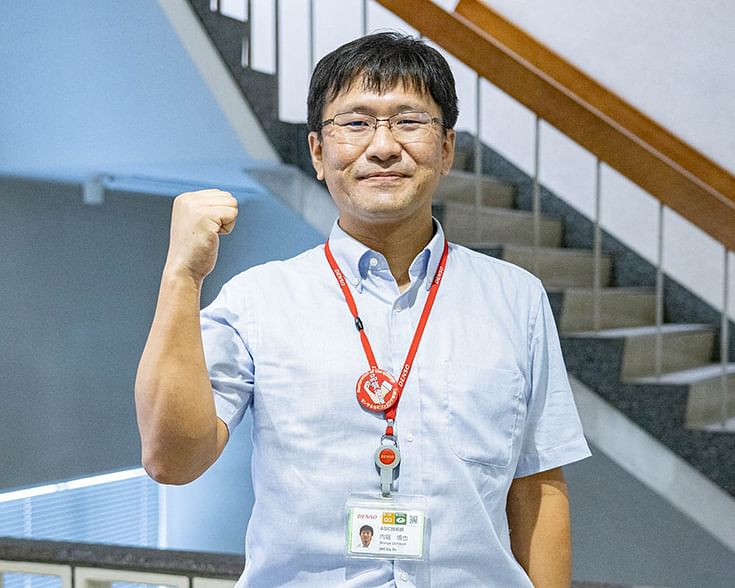Denso develops new battery-monitoring IC for lithium-ion batteries
New IC expands EV range; claimed to be the world's first IC that can accurately detect battery voltage while monitoring multiple cells, a new capability compared to conventional ICs.
Denso Corporation has developed a new generation battery-monitoring integrated circuit (IC) for lithium-ion batteries. The IC is claimed to increase the efficiency with which electric and hybrid vehicles use their batteries, improves fuel efficiency, and extends the driving range. It is the world's first IC that can accurately detect battery voltage while monitoring multiple cells, a new capability compared to conventional ICs.
The new IC can detect battery voltage three times more accurately (detection error: within 3 mV) and monitor 1.2 times more battery cells (25 ch/IC) than the conventional product Denso developed in 2015.
Denso says its development of a high-accuracy reference voltage device, a key component in the battery-monitoring IC, has made it possible to use batteries more efficiently, thus improving the fuel efficiency and driving range of vehicles.
The Japanese major has also reduced the number of ICs and peripheral parts used for battery electronic-control units (ECUs). This, along with the company's development of deep sub-micron process technology and proprietary high breakdown voltage devices, allowed DENSO to minimise the size and cost of battery ECUs.
This new Denso product is used in the Toyota Yaris, released in February 2020, and will be featured in future electric vehicles equipped with lithium-ion batteries.
How the new battery monitoring IC was developed
There were three key points in developing the battery monitoring IC for lithium-ion batteries:
- Development of a new high-accuracy device and proprietary high breakdown voltage devices,
- Design of a circuit that ensures high accuracy, and
- Design and development of a package structure that ensures high accuracy.
Three Denso engineers in charge of the development reveal the difficulties they faced, how they overcame them, and their future goals.
 Shinichiro Yanagi, ASIC Eng. Div. / In charge of device and process development
Shinichiro Yanagi, ASIC Eng. Div. / In charge of device and process development
“The most difficult part of the project was developing a device that could strike the right balance between high performance and high reliability. At first, I thought it was impossible. In general, higher device performance (e.g., higher accuracy, higher breakdown voltage) and higher reliability have a trade-off relationship."
"We really struggled to design a device structure that met these requirements and develop a technology for ensuring reliability. Eventually, the team solved the dilemma . About half of the team members, including myself, joined Denso through mid-career recruitment. We shared knowledge, skills, and commitment to quality based on mutual respect. Another major factor for success was the corporate culture of supporting each other and remaining positive despite difficulties.”

Yukihiro Tomonaga, ASIC Eng. Div. / In charge of IC circuit design
“There were two main difficulties. First, this project was Denso’s first attempt to develop a reference power source circuit using a newly developed high-accuracy reference voltage device. Second, we had to deliver our products to customers as soon as possible."
"To accelerate the project, we developed the device and the circuit concurrently. We shared the results of evaluating the device and the circuit and gave feedback to each other. In general, concurrent development involves pointing out problems to each other, so this can result in buck-passing. However, we communicated the requirements to each other honestly because we all were working for Denso as one team, and we trusted each other. We did our best to meet the customer’s requirements and create the ideal product. Denso’s strength of undertaking the entire process in-house, from design to manufacture, led to this success."
 Shinya Uchibori, ASIC Eng. Div. / In charge of package development
Shinya Uchibori, ASIC Eng. Div. / In charge of package development
"The package plays a key role in protecting an IC chip from the severe in-vehicle environment by covering the chip with resin to ensure it can perform as expected. However, the reference voltage tends to fluctuate due to the stress caused by the resin. To solve this problem, we created a structural design to determine the physical properties of resins, quantify the micro fluctuation in the resin characteristics caused by temperature changes when it is used in the market, and meet the target value. This unprecedented design project focused on such micro fluctuations. It was extremely difficult to build a theory about it. Denso’s commitment to quality enabled us to understand this phenomenon and establish the theory, which led to the success of the project."
RELATED ARTICLES
BMW Group to use natural fibre composites in its future models
Following several years of development and in-depth research, the BMW Group has reached series maturity of natural fibre...
Nissan reinvents Leaf as a sleek electric SUV with 600km range
First launched as a hatchback in 2010, the third-generation Leaf is unrecognisable compared with its predecessors. The n...
Volvo Cars signs recycled steel supply pact with SSAB
The recycled steel will be used in selected components of the forthcoming, fully electric EX60 SUV, as well as other car...





 By Autocar Professional Bureau
By Autocar Professional Bureau
 13 Oct 2020
13 Oct 2020
 8686 Views
8686 Views













